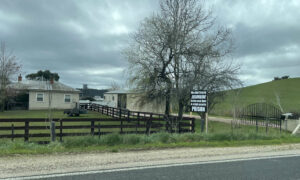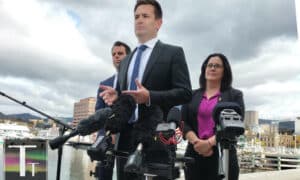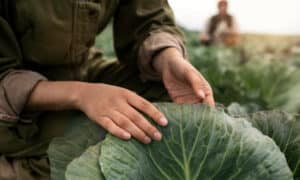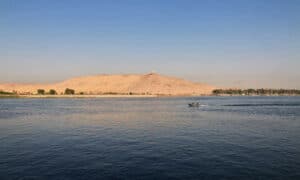IN February 2005, the Australian Financial Review published a letter to the editor from Daniel Leesong, CEO of the Tourism Council of Tasmania.
Leesong wrote in response to the publication in that newspaper’s magazine of a feature about Tasmania’s recent and much vaunted economic boom. That article, ‘State of Flux’ by Sue Neales, examined the shiny, happy phenomenon of New Tasmania.
It served up the views and profiles of a range of political players and personalities in the warring world of the development debate in our island state. Better-knowns like novelist Richard Flanagan, ANZ economist Saul Eslake, current Labor Premier Paul Lennon, dead Labor Premier Jim Bacon, TasmanianTimes.com editor Lindsay Tuffin, and academic Pete Hay joined some lesser-knowns like Save Ralphs Bay lobbyist Cassy O’Connor, Tasmanian Chamber of Commerce and Industry chief Damon Thomas, TasCOSS director Matt Rowell and small business owner Greg Summers.
Together they gave their take on the answer to questions Neales posed: What price economic development? What is the impact of Tasmania’s housing and tourism boom on values that locals have always treasured? Is the current prosperity sustainable, or is it just a bubble riding the back of national property prices?
Fair questions, I thought, thinking about the pace and nature of change in Tasmania in the past few years. I also thought Neales played a straight enough bat in her account of the legitimate differences of opinion on the answers. Perhaps writing with one eye on the Fin’s market-literate, platinum- cufflinked clientele, there was no diving off the deep green end of the spectrum of argument, and she offered a rich, mixed bag of facts and stats to support both analysis and impressions.
Handy, I thought, to be told that median house values in Tasmania have doubled in the last three years, coastal house prices have tripled, and absolute waterfront has gone off the local scale; 750 000 tourists spend $1.1 billion in Tasmania every year; the total cost of Spirits I, II and III, the Bass Strait ferries purchased since 2002 as part of a strategy to attract more tourists, was $450 million (with III taking on water as a viable business); new electricity grid, gas pipeline and wind farm projects have attracted significant capital investment to Tasmania; Coles Bay caravan park has been sold to Federal Hotels and will become a luxury spa resort; a fifteen-year monopoly licence to run poker machines, valued at $130-300 million, has been sold to Federal Hotels for an extra $2 million tax per annum; privately owned logging and woodchipping company Gunns Limited recently made a record $105 million profit from its activities in state forests; national park entry fees for locals have doubled in the past five years; unemployment in Tasmania has dropped to its lowest level since 1981; the state’s population has grown to a record high, putting brakes on the brain drain of young, professional Tasmanians to the mainland and overseas; Tasmania’s population is the fastest ageing in Australia, and by 2008 more locals will be retired than working; forty per cent of Tasmanians live at or below the Henderson poverty line; Tasmania’s welfare dependency rate is double the national average; Tasmania has the highest national incidence of children living in families (one in five) with no parent in employment; and on his premature 2004 resignation as Governor of Tasmania, Richard Butler was paid out $650,000.
Demeans, belittles, ignores
Leesong read ‘State of Flux’ differently. He saw it as something that ‘demeans’, ‘belittles’, ‘thumbs its nose’, ‘ignores’ and ‘denigrates’ the combined efforts of the many locals who work in the tourism industry and are building New Tasmania.
Leesong continued:
There are an elite few in Tasmania who see themselves as the creative class as Lindsay Tuffin describes them – who hanker for a return to (in Neales’s words) the trough when Tasmania was hemorrhaging economically, socially and demographically, because it keeps Tasmania as their exclusive playground. It’s an I’m-alright-Jack attitude. They already have homes in suburbs like Sandy Bay or Battery Point and a shack at the beach and bugger the rest of ’em. Well I’ve got news for them. Tasmania is roaring ahead and the gains are social as well as economic …
‘I am Tassie, hear me roar’? Old Tasmanian wolf in New sheep’s clothing?
Such acting-out — surely? — of the inferiority complex that Tasmanian-born cultural commentator Peter Conrad, who has lived in Britain since a Rhodes Scholarship took him there in the 1960s, has described and reacted against to considerable professional effect. In his essay ‘New New World’ published in Granta in 2000, a precursor to his longer account of Australian identity and culture in last year’s Boyer lectures, Conrad revisited Hobart to take a sad swipe at Old while nudging at New:
My parents never left the country … They did go on holidays to what they superstitiously called ‘the other side’, meaning the mainland, and brought back beer mats from a poker place in Surfers’ Paradise or a gravy-spattered menu from a Murray River cruise boat … The postcards I sent home to my parents reported on triumphant sightings of cathedrals and skyscrapers which meant little to them. They tactfully pretended to be interested, and filed the cards in albums. I found these in the house after my mother’s death, and burned them. All those journeys were detours, an excuse for running away.
… No young Australian will ever again feel as isolated, needy and inadequate as I did. Australia’s self-confidence has expanded to fill up the continent; instead of harrying its restive dreamers in exile, it awards them grants to write novels or direct films. It even honours those who have their own dissident definition of the ‘man’s country’. This year the University of Tasmania hosted an exhibition called ‘Material Boys: (un) Zipped’, with works by ‘nine male textile artists who identify as gay/queer’ addressing ‘questions of equity: the legal, social and moral status of gay men.’ That may seem a heavy burden to lay on textiles. All the same, I felt very old when I read about the show.
Luckily for Leesong the only fabric he paraded was socio-economic. And arguably he was just doing his job protesting to the Fin. According to the Tasmanian Tourist Council’s website Leesong’s organisation is Tasmania’s peak industry body, and its role is ‘to represent the interests of the private sector in the State tourist industry through on-going protocol agreements with the state government, lobbying on issues vital to tourism, and promoting the economic benefits of the industry.’
The TTC has been an enthusiastic driver of the push to open up Tasmania as a tourist destination, and of the Spirit I-III venture. It flogs theNew Tasmania, so to speak. The TTC administers the Tasmanian Tourism Awards, whose major sponsor is the Spirit of Tasmania; and the Harry Holgate Fellowship, named in honour of the (pro-dam) Labor politician who ousted Premier Doug Lowe over the Franklin Dam issue in 1981, a political stoush that led to the election of Robin Gray’s (pro-dam) Liberal government the following year.
The current Chairman of the TTC is Simon Currant, the developer of luxury accommodation at Cradle Mountain Lodge, Franklin Manor and Strahan Village, and more recently of schmick boom-scene tourist project Peppermint Bay, on a waterfront site south of Hobart where the daggy Woodbridge Hotel used to stand. During the controversy generated by the push by Jim Bacon’s Labor government to open up more national park and world heritage areas to tourist development, in 1993 Currant told the ABC’s 7:30 Reportt that, in his view:
Risk their capital and create jobs
There’s been a conspiracy amongst the far, far left green, if you like, [a] movement to go on locking it up, locking it up and locking it up. And who are they locking it up for? The point about this is that if you don’t show it to people, they won’t want to protect it.
He continued:
The [Bacon Labor] government’s taken major steps to create the environment in which people like me will go in and risk their capital and create jobs, which is terrific. They’ve got a long way to go, but they’re heading down the right track.
Twelve years further down that track, Currant’s Tasmania has come a long way. As John Lethlean penned in October 2004 in an article on Tasmanian gastro-tourism for the Age, from the perspective of his ‘vast, expensively clad bed at Hobart’s trendy Henry Jones Art Hotel’:
‘I had no idea this region had such an abundance of produce,’ says Currant over a plate of vine-wrapped local garfish and glass of Apsley Gorge chardonnay. From the [Peppermint Bay] restaurant’s smart tables, a plush lawn rolls down towards the water and across the channel sits Bruny Island …
Currant says the influx of visitors to the state has pushed the business further than expected. ‘If we’d put a business like this here five years ago, it probably wouldn’t have worked. This worldwide interest in food and wine is what’s driving things like this, but our big challenge is to communicate that you have to pay a premium for this experience. We’re operating on a world stage.’ Which is another way of saying you get what you pay for.
Returning to the TTC website, it says other Council directors include Greg Farrell of the Federal Group (that’s Federal Hotels), Peter Simons of TT-Line (that’s Spirit of Tasmania), James Cretan of Kriticos Nominees (Cradle Mountain Wilderness Village), and Roger Jaensch of Cradle Coast Authority (a joint authority created to coordinate and drive economic development across the nine local government areas of northwest and western Tasmania).
When I read the TTC website several months ago, it also included Peta Dowell-Hentall of Forestry Tasmania (the state government body that manages forest resources) in this number. Before anyone hits the writ button, I’m not imputing any conspiracy or hands-in-mates’-pockets-jobs here.
Rather, I’m making a point about the eco-politics of Australia’s far south that’s probably lost on most offshore consumers of environmental exposés about Tasmania, be they penned for mainland Fairfax papers, Britain’s Guardian or France’s Figaro, or screened on the ABC, Nine’s Sunday program or in art house cinemas everywhere.
The point is this: Tasmania’s political battles are not just internecine, they’re intimate, and frequently incestuous (how Old Tasmanians joke!). Readers of a January 2005 article by Andrew Darby in the Age, on the ‘Gunns 20′ litigation brought by Gunns Limited against a range of environmental activists, will recall him joining some dots of circumstantial association between past and present Gunns’ executives.
John Gay emerged unshaken from torrid scrutiny
While making it clear that Gunns’ current Chairman, John Gay, ’emerged unshaken from torrid scrutiny of his business’ in the Carter Royal Commission investigating the 1989 attempt by then-Chairman Edmund Rouse to bribe a state Labor MP to take the parliamentary balance of power away from the Greens — Rouse was subsequently jailed for his efforts — Darby did point out Gunns’ current board includes Robin Gray and David McQuestin.
The Wilderness Society’s website baldly notes:
Some of the members of Gunns’ board have very controversial backgrounds, including:
Robin Gray, former Tasmanian premier. Gray attempted to dam the Franklin, log the Lemonthyme forest and other areas now in the World Heritage Area, and build the Wesley Vale pulpmill. He was severely criticised by the Carter Royal Commission which investigated the 1989 parliamentary bribery scandal.
David McQuestin. McQuestin was prosecuted and convicted over his role in the 1989 parliamentary bribery scandal. He was heavily criticised by the Carter Royal Commission.
Richard Flanagan, who chose to return to live and work in Hobart after his own stint as a Rhodes scholar — perhaps because it was the 1980s not the 1960s — and whose own writing trades heavily and creatively on Old Tasmania, quoted more colourfully from the record in an article on the ‘rape’ of Tasmania in the Bulletin in October 2003:
The 1991 royal commission found that present director David McQuestin, whose friendship with Rouse it characterised as ‘obsequious’, was not ‘unlawfully involved as a principal offender’, although his ‘compliance’ with Rouse’s direction in the matter was ‘highly improper’ — a ‘glaring breach of the requisite standards of commercial morality’. Former Liberal premier Robin Gray is also a director of Gunns: the royal commission found that he ‘knew of and was involved with Rouse in Rouse’s attempt to bribe Cox’, and that while his conduct was not unlawful, it was ‘improper, and grossly so’.
Circumstantial association isn’t confined to the gung ho New Tasmania camp. There are also ties of close allegiance, friendship and occasionally more between many Tasmanians publicly critical of the state’s current development direction. These include any number of named and sleeping characters in Neales’s story, including Lindsay Tuffin, Pete Hay, Cassy O’Connor and Richard Flanagan himself. But no, I’m not imputing conspiracy here either. Nor am I throwing stones from some glasshouse of distance or detachment. Their meandering lines of close connection engage my own, as well as — like it or not, admit it or not – those of key members of what I’ll rudely call Club Currant.
The resulting web is truly Old Tasmanian. An abiding memory of my own Hobart childhood is the sense of being cloistered. Of everyone being connected to everyone else, of separation being measured in fractions of degrees, forget whole ones, never mind that greedy New York number six. As a teenager in the 1980s, all I could see was the claustrophobic downside of
that: the scrutiny, the judgement, the limitations. And all those bloody cousins – there always seemed to be some state parliamentarian I was related to on the telly, usually a Liberal Minister, with whom I invariably disagreed. So I left, along with most of my school friends, for broader horizons and bigger markets and deeper gene pools, and a bit of privacy, and none of us has yet moved back. Which means we miss and miss out on the upside of the connections of our Old Tasmanian life. Just the way the cousins said we would. Maddening then, maddening still.
One of those benefits can be an almost perverse accommodation in the same very extended family, or very small social pond, of everything from the deep green to blood red to icy blue in the range of political positions on any given topic. Including the environment and what to do with it, no matter how passionate and polarised the convictions. Reasons for this have included Tasmania’s unusually small number of distinct family bloodlines and the island’s peculiar and extreme geographical isolation from real centres of population, political and economic power.
Darkly mapped by Conrad
This paradoxical and parochial tolerance is the upside of the inferiority complex darkly mapped by Conrad, a sentimental tribalism born of living at the edge of the Western world, and near the bottom of its heap. Disturbingly, however, this backhanded tolerance can and does backflip into that venal dark side.
This plays out in bullying, vendettas and sometimes violence. Flanagan in the Bulletin again:
When Bacon first came to power in Tasmania, one of his most vaunted initiatives was a consultative process known as ‘Tasmania Together’, which, he declared, would deliver a blueprint for the island’s future that he would honour. Community leaders were chosen to front the process, and at public meetings around the island, they debated what Tasmania might become. They discovered that Tasmanians overwhelmingly wanted old-growth logging ended … But in spite of the public’s clear desire and Bacon’s own promise, the government refused to contemplate any changes to existing forestry practices. Two high-profile community leaders, Anna Pafitis and Gerard Castles, were forced out because of their public opposition to what they regarded as government subversion of the process. Castles, a corporate communications consultant, wrote an article in The Mercury explaining his position. On the same day I met a prominent Tasmanian politician who flew into a rage at the mention of Castles’ name. ‘The fucking little cunt is finished,’ he said in front of me and my 12-year-old daughter. ‘He will never work here again.’
So it goes in the island state. Castles’s work is now entirely outside of Tasmania. To question, to comment adversely, is to invite the possibility of ostracism and unemployment, and the state is full of those who pay a high price for their opinion on the forests, the blackballed multiplying with the blackened stumps. It is commonplace to meet people in various positions and businesses too frightened to speak publicly of their concerns about forestry practices because of the adverse consequences they perceive this might have for their careers and businesses.
So everything Old is New again in Tasmania. Or should that be the other way round? Things seem to be changing, now, even as some stay the same. Thanks to a mishmashed combination of the internet, discount airlines, cashed-up boomers seachanging from the mainland, Jim Bacon (not Tasmanian-born, which may be significant), Greens leader Bob Brown (also not Tasmanian-born, which may also be significant), Richard Flanagan (a Bacon enemy), Richard Butler (a Bacon import) and now Danish princess Mary Donaldson (Tasmanian-born and raised, and reportedly now seeking prime real estate back home, money clearly no object a missed photo opportunity for Bacon and Butler if ever there was one), Tasmania’s now part of the wider world as never before. It’s hardly centre stage nationally — never mind globally, despite rumoured plans to build an IKEA store near Hobart airport — but it’s certainly less marginal, more visible, on both fronts than in the sloughs of Conrad’s despond.
Which leads back to Daniel Leesong’s trough. Or is it Lindsay Tuffin’s? Or maybe mine? Because something revolts me about the New Tasmania and its stainless steel kitchen renovations filled with ‘elite’ appliances.
It’s not that I hanker for the life of my grandmother, a dairy farmer’s wife in Scottsdale, who sat at her kitchen table sewing children’s clothes from Gibson’s flour bags when she should have been writing.
It’s not that my green eyes crave high-wired decking on some wow-shack on Bruny Island by someone bastardising Glenn Murcutt … well they do, just a teeny bit, because I don’t own real estate in Sandy Bay or Battery Point, or anywhere as it happens, which on one reading of the market means I’m buggered, Daniel.
Until the fat lady sings
Take this from the letters section of Lindsay Tuffin’s website: Lucky for me I bought 3 1/2 years ago when prices were affordable. Tassie has the worst housing affordability in the country. Lucky for those already in it, stiff cheddar for those in tents, signed ‘Worried’, November 2004.
But none of that’s over until the fat lady sings. Remember that newspaper headline from Old Tasmania, circa mid-1990s, ‘PM’s Tassie quip falls flat’, when Paul Keating scoffed at the patent undesirability of a block of flats in Tasmania. And this, from Mrs Arthur H. Garnsey (née Anne Stafford Bird)’s 1947 fruit-syrupy memoir The Romance of the Huon River:
The year 1891 was a disastrous one for poor Tasmania. The high speculation which had been going on during an abnormal land-boom in Victoria and New South Wales bore bitter fruit for many. Also, at this time the silver boom in the Tasmanian mines was at its height. This was not founded so much on the actual amounts of silver produced by the mines as upon rash speculation in scrip.
There are always people and always will be people who are more than ready, in fact who rush to speculate rashly, hoping to make much money out of little. Well, while the ‘big boom’ lasted, all seemed to be going merrily. Men smiled broadly and rubbed their hands in that pleased way men have of rubbing their hands, as they talked of land and silver …
But one morning those smiles all vanished, for the door of the Bank of Van Dieman’s Land was not opened at ten o’clock as usual. That door was closed forever. Crowds soon gathered before it in the street. Men growled bitterly, and women wept and sobbed as the cruel truth dawned on them … None had the faintest idea that there was a likelihood of such a thing happening. It was a terrific shock … Speculation in land and scrip came to a standstill. Land bought at boom prices became almost unsaleable. This was altogether a very sad time and for two years things grew from worse to worse, and one wondered — What next? — What next?
What next, indeed. I don’t like a lot of the look, smell and taste of New Tasmania because it’s making Tasmania look, smell and taste more like everywhere else.
Starting with London, where I lived at the end of last century. There the market realities of the Blair Boom drove me and my Tasmanian flatmate to basement living, in an area gentrifying by the minute, so that before you knew it you needed a City job or a trust fund to step across the residential threshold. Where real estate agents told us, with straight faces, that spanking new jerry-built apartments had no room for undies, books or catswinging because ‘the look of now is minimalist’.
And moving onto Sydney, where I live now, in an old flat quietly boasting one of the last unrenovated kitchens in a ten-kilometre radius. It’s only a question of time before the Miele arrives, or a developer. The property next door’s just been bashed to the ground. A white leadlit bungalow from the 1920s, with a Peter Cundall-ish garden with vegies and fruit trees, also nuked. There were objections. Petitions. Talk of turning the house and land package into an art gallery. But no, what’s going up is denser ’boutique’ living for more profit. More eaveless boxes that push their window face to the edge of the block. More apartments the colour of budgie poo, with a yucca or two rising from white pebbles, to artfully shade the security cameras at the gated reception.
I can always decamp. Move away from the ocean, even though it’s a thing of beauty and joy; and even though, or really because, I’ve never lived in Sandy Bay or Battery Point. Erskineville sounds like a goer. I remember it from uni days as dirty, cheap, inner-west, cockroach-cluster living. Grunge and druggies, wogs and white trash all jostling for space. But that was the 1980s, and this is now. Today, the Domain section, the chunkiest part of the Sydney Morning Herald, offers the following ‘bargain’: ERSKINEVILLE Smart 2 brm aprt in boutique conversion with French provincial influences! Prime location, minutes from Village and Stn. $439 000.
Does ‘French provincial influences’ mean pruniered lavender and rosemary instead of rougha yucca? The mind boggles.
Further west, then? Next stop Campsie, near the scene of the Canterbury childhood of John Howard, but still a fair bit less Woop Woop than Mark Latham’s hackneyed Green Valley. I drive out there one summer Saturday. It takes a long time. Campsie’s even hotter and dirtier than Erskineville, further from the sea, and a very long way from Kirribilli House. And I’m a very long way, too far, now, from the sight of dripping phosphorus in water splashes at an old boathouse in Cornelian Bay, from the scent of wild fennel on the wilder banks of the Hobart Rivulet under the bedroom window of my own childhood, from the secret taste of burnt mussels on the rocks at Boronia Beach near Kingston. I drive down a high street that’s a noisy collision of Beirut and Baghdad, Seoul and Shanghai. I turn into the suburb and park in front of a scabby-looking block of red brick flats. There’s a pepper tree plonked on the nature strip.
Chocolate muffins and green tea
The lesson goes well. My friend’s wife serves up chocolate muffins and green tea as we sit at their kitchen table. I explain the difference between ‘a frog’ and ‘the frogs’. Their ten-year-old daughter writes notes in her exercise book. She wants to go to university one day. When I tell her where John Howard lived when he was her age, she asks if that means she can be Prime Minister of Australia.
My friend writes a story about his home town, a smallish city on the south-east coast of Korea. He remembers when there were more farms and fish in the sea, and the water from the mountains ran cold and clear, and there were many frogs and many insects, like grasshoppers. Now, he says, everything is different. Shopping malls, apartments, fast food everywhere. The frogs and the grasshoppers have gone. He signs off with this: ‘I miss my childhood.’
Ah, don’t we all? I drive home remembering the stories our Old Tasmanian neighbour told me when I was ten years old, about the eels and freshwater crays swimming in our rivulet under Mount Wellington, a long time ago, when she was a little girl. I don’t know if the stories are true. She’s dead, so is her husband, and their house has been sucked into the ’boutique’ retirement village Vaucluse Gardens — that’s Vaucluse South Hobart, not Vaucluse Provence, despite all those lavender bushes — that now takes up all of our street and most of our suburb. As developments go, it’s not too bad: no budgie poo facades, no yuccas. If you factor out the seismic shift to wall-to-wall seventy-somethings, and the huge hike in personal wealth it now takes to buy into postcode 7004.
Right now I can smell the salt in the air from the sea. All this I know is real luxury, real privilege. I’m remembering a visit to Old Tasmania sometime in the late 1980s, those returns still reluctant and chafing, and walking down to the harbour at Sullivan’s Cove to clear my head. There, in front of me, loomed the newly opened deluxe hotel that’s now the Grand Chancellor. Marvelling at its astounding, self-evident ugliness, I slowly walked around the perimeter. Some bright spark had emblazoned this on one wall: ROBIN GRAY HAS AN EDIFICE COMPLEX.
That bit of graffiti’s long gone, and in the light of Gunns 20 I don’t fancy the chances of anyone spraying similar on the minimalist putty exterior of Zero Davey boutique apartment hotel and getting away with it.
So for now I’ll settle for two photos stuck on my fridge.
One’s from a wall near our flat in London, a chipped and faded message from Margaret Thatcher’s 1980s: DON’T PAY POLL TAX.
The other’s more recent. I snapped it a couple of years ago, when Turbo Tassie was starting to rev up in earnest. It’s from postcode 7004. A place that used to be my own — but much less exclusive — playground:
i want to swim in the rivulet!!
Natasha Cica’s article is published in the latest edition of Island 101 magazine. It is reprinted with permission.
Island
























